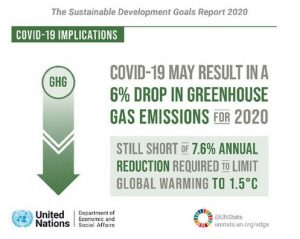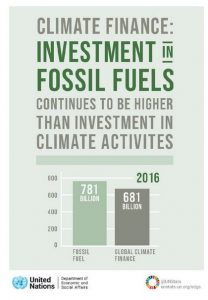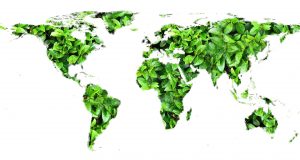How eyewear goes green – within the realm of the possible

But how does a viable way of making the global frame and lens production more sustainable look like? MAFO has spoken to an expert who knows the eyewear industry like the back of her hand and who leads the way forward into a green future. By Hanna Diewald
How can the optical industry work sustainably and economically at the same time? What is the best place to start as an entrepreneur? Where do you get sustainable raw materials for glasses and how do you differentiate “greenwashing” from really meaningful campaigns? Lene Bille Hoegh knows the answers to all of these questions. She and her husband ran an international eyewear company for years before she decided to found the sustainable consulting agency GreenOpticalPlanet, out of personal conviction. Today their team consists of industry veterans who specialize in advising optical companies on how they can become more sustainable. Bille talked to MAFO about the opportunities and pitfalls of sustainable production and her appeal to the industry to find a sustainable recycling system for demo lenses.
What is your philosophy at GreenOpticalPlanet (GOP)?
Our focus is on the client´s sustainability objectives. We are here to help fill the gaps. Most companies already have their own networks but maybe they need help with more suitable, sustainable raw materials or certificates, or maybe they need the overall view of the United Nations sustainability goals relating to their own strategy. We assist where needed, whilst not staying on board longer than necessary. Our aim is to help the clients move forward and then let them move on to their own green path.

Our personal GOP philosophy is to try to do quite impossible things within the realm of the possible. There is no 100% sustainable eyewear solution yet, however, by piecing the options together as they are introduced in the market, even helping them emerge, we believe that eventually you will reach some fully sustainable and at the same time truly scalable options.
The planet increasingly needs all of us to change the way we manufacture, transport and consume goods, and this needs to happen sooner rather than later. At the same time the eyewear industry leaders have not really hurried to find green solutions; other industries have lead this way before the eyewear industry.
We think the reason for this is less about unwillingness to change, and more about not knowing where to begin. Therefore we really need people, who actually know the eyewear industry, to band together regarding the sustainability aspect. The future needs sustainable fashion – and the consumers in Europe are asking for it loudly.
How “green” is the eyewear industry already?

I think everybody in the eyewear industry has started to think about sustainability, but not everybody has implemented it yet. We are still in the beginning of the process as an industry. There are many aspects to a fully sustainable product range. Our experience is that after companies have taken the first few steps, most come to a halt. Many start with greener packaging or sustainable measures at their retail locations. The next step for these companies would be to look at raw materials, manufacturing and freight. Or they have already implemented one type of biobased or recycled raw materials, but have not looked at their storage or retail aspects.
Often it is not unwillingness that keeps a company from taking the next green step – they are simply not confident about which crossroads to take. Should they go with recycled, recyclable, biobased or biodegradable? Each of these choices has their own host of challenges as well as the design and manufacturing processes and locations that need to be taken into account.
The European governments have already taken lots of regulatory steps and the European consumers request more sustainable products, and this forces us all to look for more sustainable solutions. If you look at the North American markets, there are still only lesser parts of the consumer segment and only partial government regulations that cater for change, while other parts of that market are trying to keep the status quo.

The current global drivers for green change are consumer demands and governmental regulations, and we are seeing both demands emerging more and more strongly. At GOP we urge the third driver, which is the industry leadership, to drive this change and create the sustainability demand from within as well.
What is the biggest challenge for most companies on the way to a sustainable production?

This also requires careful consideration, so that the company chooses the material that supports their type of product best. In our experience choosing the raw material is the key, and so is choosing the best suited manufacturer for that material. The manufacturers are not all alike when it comes to getting the most out of an alternative raw material. That said, there are better and better sustainable raw materials introduced to the market all the time. In particular the chemically recycled materials are promising, as they hold no quality and process restrictions compared to conventional materials, their challenge is the cost structure instead.
Could you please explain the term greenwashing?
The idea of greenwashing is that something looks good and green, but when you look deeper into it, it is not. That means, for example, that somebody simply claims that something is green and when you check the chain of custody you discover – it is just a lie. That is the worst kind of greenwashing.
Another example of greenwashing is when companies try to do good things but they are actually not sustainable, even though they were meant to be, for example ocean-plastic frames. There are wonderful campaigns for eyewear that is made of reclaimed fishnets and ropes, but the production process is often very carbon dioxide and water consuming, and most of the end material does not have the quality you need for eyewear, which creates double waste. In general you end up spending a lot of resources trying to extract and recycle the plastic and then you have to discharge maybe 50% – 70% of the recycled material, because it is not good enough. Basically you end up with a product that is a beautiful idea, but it just doesn’t work.
If you want to go that route it is just smarter to join forces with one of the organizations that work in cleaning up the oceans and simply pay them an amount for each frame sold. That will have a truly efficient impact on the environment.
Which raw material do you recommend the most?
The pros and cons depend on where you are placed in the value chain. At GOP, we currently tend to promote recycled raw materials more than anything else. Because for most companies in the eyewear value chain that is still the most manageable option. For a manufacturer or an optical company, the natural first choice is to transition to raw materials that are already recycled, and to produce recycled-content product and offer this to their consumer. This is what we consider a quick win. This way you have already taken your first step towards sustainability, without having to revolutionize your whole business.
The raw materials we recommend have a relatively low carbon footprint, and we also check whether they are ethical. That is important because you can also get recycled products that actually have a higher carbon footprint than a conventional product. That is not really green!
For an international retail chain or for a trade organization, for example when we talk about demo-lenses and central labs, looking at producing products from conventional raw materials and concentrating your effort on creating recyclable loops post-consumer is a very necessary – but also a much longer – strategy, because it has to be done on a bigger scale, in order to be financially and carbon offset sustainable. It requires taking back infrastructures and localized recycling systems, so it is a much slower win, but also one with a much larger impact when it is finally implemented.
What do you think about biodegradable and biobased products?
This concept of biodegradable has many interpretations. Most biodegradable claims still require a particular environment in order to actually degrade. Instead, a solution would be to work with recycled materials or indeed with materials that are biobased, from simple wood to the more complex processed natural materials. But you still need to consider carefully. There are several levels of sustainability just within the term biobased. For example, you can think you are choosing sustainably when you use castor oil based raw materials, but only some of the castor oil plantations are sustainable, others have taken their acreage from rainforest, in which case it is not really sustainable.
Which are the most important aspects that should change in the optical industry in order to make eyewear more sustainable?
1. There is a truly desperate need to develop both sustainable demo lenses and spectacle lenses, with a clearness, hardness and price that can keep up with traditional products.
2. There is a need for a motivation from the heart to invest in research and develop much better alternative raw materials.
3. There is a need to develop a design ethos that constantly challenges use of material, ratio of waste and also of weight and space for transport. 4. There is a need to understand the differences between recycled and recyclable, and setting up workable loops for both. Recycled is pre-consumer, so we are talking about raw materials and manufacturing scrap programs, whereas recyclable products are on the retailer and the consumer side. For retailers there is a big task ahead in not creating the same level of unsold returns and also in learning alongside their consumers how to consolidate take-back systems that work. 5. In the end everybody has to understand that we probably won’t get eyewear for one and a half dollars anymore.
What should and shouldn´t companies do in general?
No company should work with partners who don’t comply to local and international compliance rules. This goes for clean water, filtration, energy, work ethics, quality or wages. You need to know if the people or companies you work with follow the local standards or not, and if they are committed to even going beyond local standards.
Besides that, when you talk about the manufacturing part of our industry, then the most important thing is that it is certified, because in a good certification program most or all of these things are taken into account, and companies should look to enroll and create constantly better trade standards.
If you are a volume product business and you produce and distribute fast fashion products for a very price-sensitive market, your first step probably would not be to look on the life cycle or responsible consummation. But you can still look to the United Nation´s sustainability goals number six, seven and eight. These goals are about protecting the environment. You can work with how much water you should use, how much carbon reduction you can achieve, and how you can choose different, greener raw materials.
If you are a premium product business, you can do a lot for sustainability in one go. The consumer will see those glasses/brands as an investment, and they normally keep the product for a longer time. Your initial price point is higher, and you can either absorb more cost for sustainable work, or you can even promote sustainable consumption and raise the price for the consumer.
Is it also more sustainable to produce and distribute eyewear locally instead of, for instance, producing in China and selling frames in the USA?

If you produced everything you bought next door, then you would be “hyper green”, but that is not the way things work. It is not financially sustainable. The environment is not the only aspect of sustainability, economic viability and social equity are also important.
There is no problem in making a premium product nearby because you can price up and you can sell it, but if you want to produce higher volume products, then either the consumer has to be willing to pay more or you have to do it in places that work and that also feed families. So, sometimes your best option is to do it in Asia.
What can lens manufacturers do?
For me this is one of the areas where more research and development is required. If you are one of the bigger organization within lenses, than you can definitely invest into research. There are a bunch of big companies that are really investing and trying to find solutions.
And if you have a small business, then you can still put a greener option for your customers into your portfolio. But be very transparent about any issues, for instance when the lenses scratch easier or they are less clear or cost a little bit more. Because those are some of the issues, concerning the options that are in the market right now.
The most important thing is to be ready and willing to try. Just understand that sustainability is the way it is going, and you don’t have to wait before getting on board.
The lesser issue for me is prescription lenses, because they have a longer life. The first and bigger issue is demo lenses, because labs and opticians take them out and throw them away. Demo lenses mainly end as waste in landfills, or have downcycle programs that are too complicated and costly. It is important to find an infrastructure for the central labs. To find a way to send the demo lenses back into the value chain and recycle them, either chemically or manually. Be it into new demo lenses or another product.
Creating take back programs and recycle programs requires optical companies, trade organizations, organizations like our own GOP and maybe even raw-product manufacturers, to all band together with the big retailers, and create infrastructures with pick up points for the central labs. This level of sustainability is not a commitment you onboard alone. It really requires that everybody works together.
Thank you for the interview. ◆
GreenOpticalPlanet
In early 2019 Michael Jardine, Lene Bille Hoegh and Clark Sui Wonders started the consultant service GreenOpticalPlanet. It is their belief that the best possible legacy will be to work to assist all companies in evolving to be environmentally friendly and to support the people involved to become responsible citizens of the Earth. Co-founder Michael Jardine started in the eyewear industry in 1980 as a founding partner of the Canadian TannerEye leather eyewear factory. He moved into developing and exporting high quality eyewear in Japan in the late 80´s and operated as a manufacturer´s agent in the early 90’s in Hong Kong. In 2000, he founded Mondottica, his own eyewear company, developing and distributing licensed fashion brands throughout the world. In recent years, since Michael and Bille, his life and business partner, prepared to exit Mondottica, it has been their wish to give something back to the industry that has been their home for many years. They teamed up with their business partner from the industry, Clark Sui Wonders, and founded GreenOpticalPlanet.


